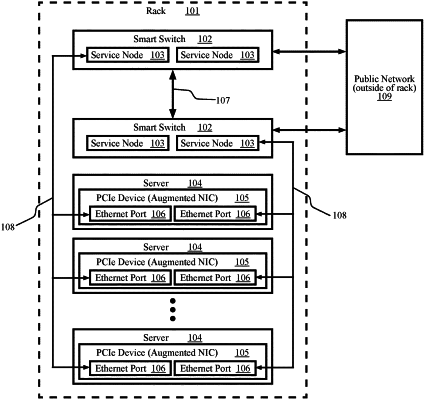| CPC H04L 45/745 (2013.01) [H04L 12/4641 (2013.01); H04L 45/02 (2013.01); H04L 45/566 (2013.01); H04L 45/66 (2013.01); H04L 61/2503 (2013.01); H04L 2101/663 (2022.05)] | 20 Claims |

|
1. A method comprising:
receiving a first packet that includes a source address in a source address field and that includes a destination address in a destination address field;
selecting a selected service node that is one of a plurality of service nodes in a circular replication chain that replicates service state information;
routing the first packet to the selected service node;
producing, by the selected service node, a translated packet from the first packet using the service state information;
changing the service state information of the selected service node because producing the translated packet causes a change in the service state information of the selected service node;
producing a first sync packet that a downstream peer can use to update the service state information of the downstream peer based on the change caused by producing the translated packet;
sending the first sync packet to the downstream peer;
transmitting, by the selected service node, the translated packet toward a destination indicated by the destination address after the selected service node receives the first sync packet from an upstream peer;
using a second sync packet that is received from the upstream peer to change the service state information of the selected service node; and
sending the second sync packet to the downstream peer,
wherein the service nodes include the upstream peer, the downstream peer, and the selected service node.
|